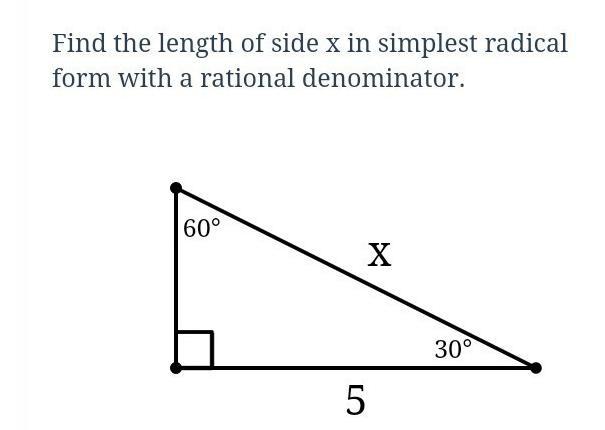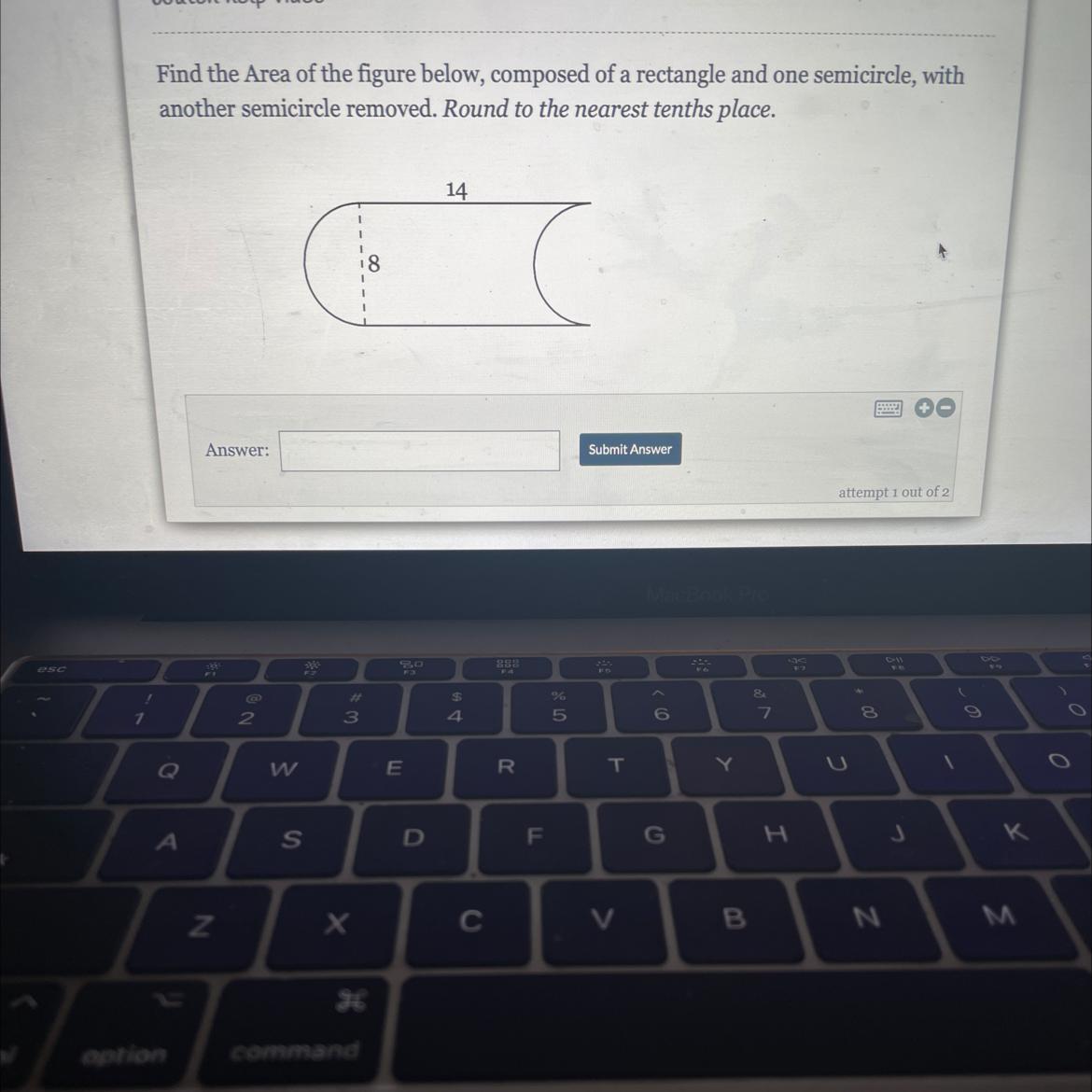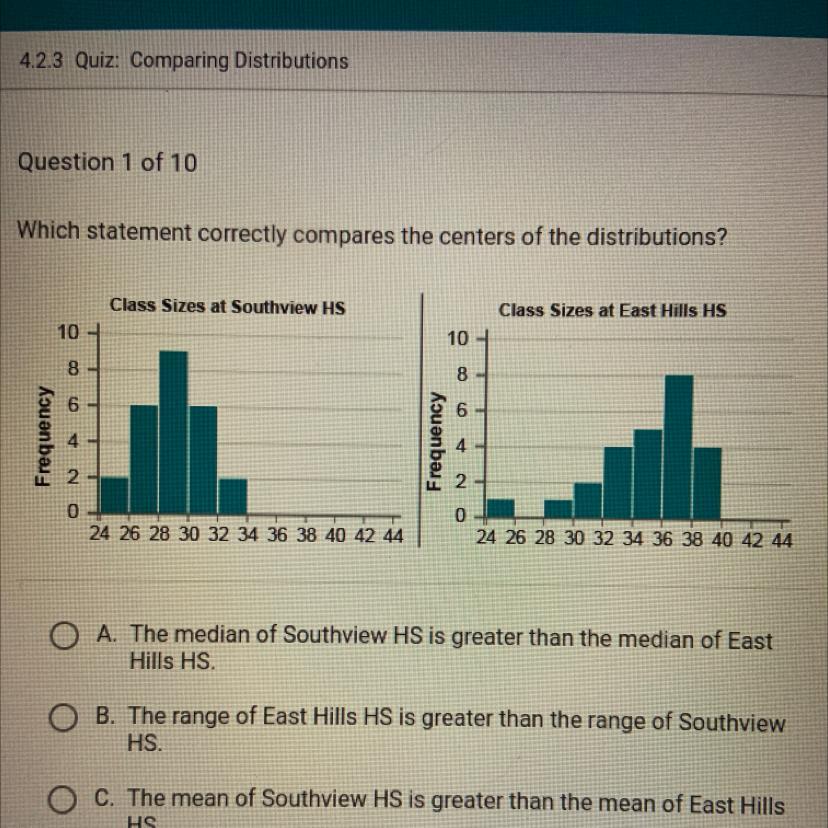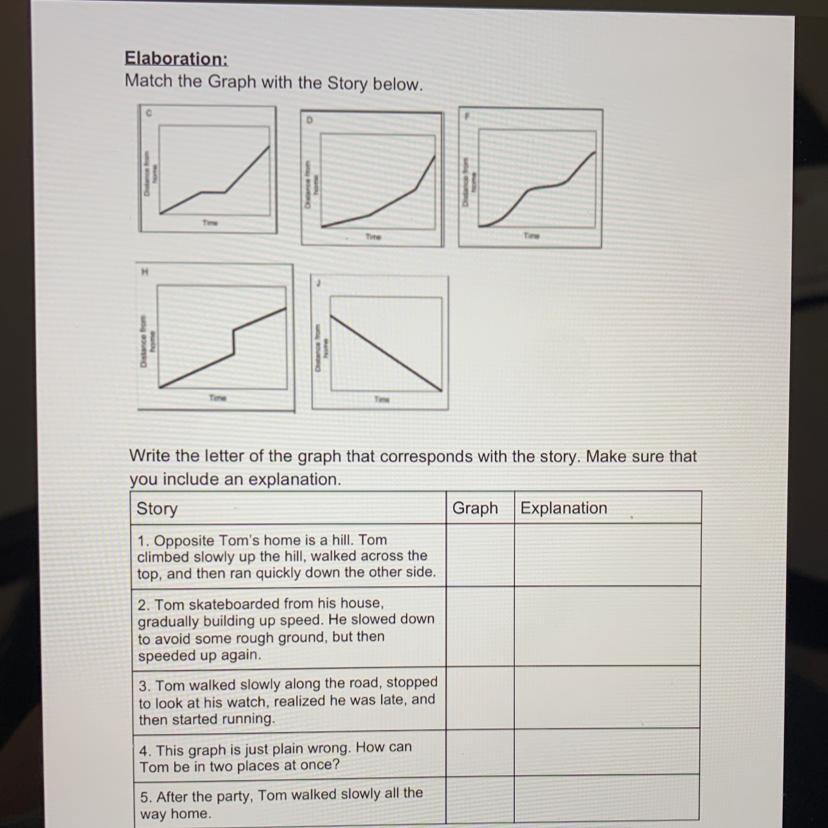To estimate the percentage of defects in a recent manufacturing batch, a quality control manager at General Electric selects every 19th refrigerator that comes off the assembly line starting with the seventh until she obtains a sample of 70 refrigerators. What type of sampling is used? (a) Simple random (b) Systematic (c) Cluster (d) Convenience (e) Stratified
Answers
Answer:
Option B - Systemic
Step-by-step explanation:
Looking at the question and the options, i can tell it is a systematic random sampling.
This is because, a systematic random sampling is a type of sampling method where samples are chosen from a larger population based on a random beginning point that has a definite and periodic interval.
We are told that a quality control manager selects every 19th refrigerator that comes off the assembly line starting with the sixth until she obtains a sample of 70 refrigerators.
This means that;
Periodic interval is Every 19th
Beginning point is every 7th
Sample size is 70
Hence, this type of sampling is a systematic random sampling.
Related Questions
I don't need lengthy details I just want the answer

Answers
Answer:
Sue rode 1885 miles total
Step-by-step explanation:
There are 31 days in March, 30 in April, and 30 in May.
31 * 12 + 30 * 12 + 30 * 12 = 1092
There are 30 days in June and 31 in august.
30 * 13 + 31 * 13 = 793
Now we find the total:
1092 + 793 = 1885
Find the coordinate of point m
that partitions the segment Ab
In the ratio 3:4 if A 7,-3 and b -7,4
Answers
The coordinates of point M divides the line segment AB int he ratio 3 : 4 is given by ( 1, 0).
Ratio in which line segment AB divides m : n = 3 : 4
Let us consider the coordinates of A be ( x₁ , y₁ ) = ( 7, -3 )
Let us consider the coordinates of B be ( x₂ , y₂ ) = ( - 7 , 4)
Let us consider the coordinates of M be ( x , y )
Using the formula of line segment divides in the ration m: n we have,
x = ( mx₂ + nx₁ ) / ( m + n )
y = ( my₂ + ny₁ ) / ( m + n )
Substitute the values we have,
x = ( 3 × (-7) + 4 × 7 ) / ( 3 + 4 )
= ( -21 + 28 ) / 7
= 1
y = ( 3 × (4) + 4 × -3 ) / ( 3 + 4 )
= ( 12 - 12 ) / 7
= 0
Therefore, the coordinates of point M which partition the line segment AB is equal to ( 1, 0).
learn more about coordinates here
brainly.com/question/14780868
#SPJ1
The above question is incomplete, the complete question is:
Find the coordinate of point M that partitions the segment AB in the ratio 3:4,if A (7,-3) and B (-7,4).
In 2005, the price of a guitar was $246. By 2008, the price had increased to $300. Assuming that the guitar's price increases linearly. What is the price of the guitar by 2011?
Answers
Considering the expression of a line, the price of the guitar in 2011 is $354.
Definition of linear equationA linear equation o line can be expressed in the form y = mx + b
where
x and y are coordinates of a point.m is the slope.b is the ordinate to the origin.Knowing two points (x₁, y₁) and (x₂, y₂) of a line, the slope of the line can be calculated using:
m= (y₂ - y₁)÷ (x₂ - x₁)
Substituting the value of the slope m and the value of one of the points, the value of the ordinate to the origin b can be obtained.
Equation in this caseBeing:
Price= m× Year + b(x₁, y₁)= (2005, 246)(x₂, y₂)= (2008, 300)the slope can be calculated as:
m= (300 - 246)÷ (2008 - 2005)
m= 54÷ 3
m= 18
Considering point 2 and the slope m, you obtain:
300= 18×2008 + b
300= 36,144 + b
300- 36,144 = b
-35,844 = b
Finally, the equation of the line is Price= 18×Year - 35,844
Now, you want to know the price of the guitar in 2011. Replacing in the linear equation, you get:
Price= 18×2011 - 35,844
Solving:
Price= 36,198- 35,844
Price= 354
In summary, the price of the guitar by 2011 is $354.
Learn more about the equation of a line having 2 points:
brainly.com/question/16137599
#SPJ1
By rounding to 1 significant figure, estimate
361.42 / 79.45
Answers
Answer: 5
Step-by-step explanation:
To solve this, we would have to divide 361.42 by 79.45. This will be:
= 361.42 / 79.45
= 4.549
We can see that 4.549, has 4 significant digits. By the time we round it off to 1 significant number, we would have 5.
Felicia has a stack of 10 cards. Each card is labeled with a number in the range 1 through 10 and no two cards have the same number. She picks three cards at random from the stack and adds the numbers on the three cards. What is the expected value of the sum
Answers
Answer:
The expected value of the sum of three numbers chosen out of 10 numbers will be 16.5.
Step-by-step explanation:
Felicia has a stack of 10 cards with number 1,2,3,4,5,6,7,8,9,10
Selecting 3 cards out of 10
10C3 = 120
Now she picks three cards to look at their numbers and sum it up
The possible three numbers are
(1 2 3), (1 3 2), (2 1 3) ,(2 3 1), (3 1 2), (3 2 1) ,(1 2 4), (1 4 2), (2 1 4), (2 4 1),
(4 1 2)│(4 2 1), (1 2 5), (1 5 2)│(2 1 5), (2 5 1) ,(5 1 2), (5 2 1), (1 2 6), (1 6 2), (2 1 6), (2 6 1), (6 1 2) ,(6 2 1) ,(1 2 7), (1 7 2) ,(2 1 7), (2 7 1), (7 1 2), (7 2 1), (1 2 8), (1 8 2), (2 1 8) ,(2 8 1), (8 1 2) ,(8 2 1), (1 2 9), (1 9 2), (2 1 9), (2 9 1), (9 1 2), (9 2 1),
(1 2... …, (6 10 8), (8 6 10), (8 10 6), (10 6 8), (10 8 6), (6 9 10), (6 10 9), (9 6 10),
(9 10 6), (10 6 9), (10 9 6), (7 8 9), (7 9 8), (8 7 9), (8 9 7), (9 7 8), (9 8 7), (7 8 10),
(7 10 8), (8 7 10), (8 10 7), (10 7 8), (10 8 7), (7 9 10), (7 10 9), (9 7 10), (9 10 7),
(10 7 9), (10 9 7) , (8 9 10), (8 10 9), (9 8 10), (9 10 8), (10 8 9), (10 9 8)
Now we sum it all up so minimum sum can be 1+2+3 = 6 andthe maximum can be 8+9+10 = 27
Let S denote the sum of the three numbers that are chosen and P(S=k) denotes its probability
P(S=6)=1/120
P(S=7)=1/120
P(S=8)=1/60
P(S=9)=1/40
P(S=10)=1/30
P(S=11)=1/24
P(S=12)=7/120
P(S=13)=1/15
P(S=14)=3/40
P(S=15)=1/12
P(S=16)=1/12
P(S=17)=1/12
P(S=18)=1/12
P(S=19)=3/40
P(S=20)=1/15
P(S=21)=7/120
P(S=22)=1/24
P(S=23)=1/30
P(S=24)=1/40
P(S=25)=1/60
P(S=26)=1/120
P(S=27)=1/120
Now adding all the sum in order to get the expected value
∑(K=6 to 27) k*P(S=k) = 33/2 = 16.5
Therefore the expected value of the sum is 16.5.
Find the surface areaDo not round pleaseFormula: SA= 2 * 3.14 * r * h + 2 * 3.14 * r^2

Answers
Given:
The radius of cylinder is r = 2 yd.
The height of cylinder is h = 7.
Explanation:
The formula for the surface area of cylinder is,
\(S=2\pi rh+2\pi r^2\)Substitute the values in the formula to determine the surface area.
\(\begin{gathered} S=2\cdot3.14\cdot2\cdot7+2\cdot3.14\cdot(2)^2_{} \\ =87.92+25.12 \\ =113.04 \end{gathered}\)Answer: 113.04
PLEASE HELP WITH EXPLANATION
Mary always saved 45% of his salary. When his salary decreased by 20% in April, his savings decreased by $180.
How much was Mary’s salary before the decease?
Answers
Answer:
Step-by-step explanation:

Answer:
Is Mary a guy? :|
Step-by-step explanation:
I did this by just a good guess , not really the right way
2000*.45=900 ( 900 is the old savings)
2000*.2 =400 ( how much her salary went down by )
2000-400=1600 ( new salary )
1600*.45 = 720 ( 45% of new salary is new savings
900-720=180 ( change in savings is 180 , the amount the question asks for)
Mary's old salary was 2,000
Find the length of side X in simple radical form with a rational denominator
Answers
The length of side X in simple radical form with a rational denominator is 25/√3.
What is a 30-60-90 triangle?In Mathematics and Geometry, a 30-60-90 triangle is also referred to as a special right-angled triangle and it can be defined as a type of right-angled triangle whose angles are in the ratio 1:2:3 and the side lengths are in the ratio 1:√3:2.
This ultimately implies that, the length of the hypotenuse of a 30-60-90 triangle is double (twice) the length of the shorter leg (adjacent side), and the length of the longer leg (opposite side) of a 30-60-90 triangle is √3 times the length of the shorter leg (adjacent side):
Adjacent side = 5/√3
Hypotenuse, x = 5 × 5/√3
Hypotenuse, x = 25/√3.
Read more on 30-60-90 triangle here: brainly.com/question/30283450
#SPJ1
Missing information:
The question is incomplete and the complete question is shown in the attached picture.

i will mark you brainliest once you get the answer correct first!!

Answers
Given:
A composed figure of a rectangle, semicircle and another semicircle removed.
To find:
The area of the given figure.
Solution:
From the given figure it is clear that the diameter of semicircle and removed semicircle are same, i.e. 8 cm.
Since the diameter of semicircle are equal, therefore their area is also equal.
The area of the given figure is:
A = Area of the rectangle - Area of removed semi circle + Area of semicircle
A = Area of the rectangle - Area of semicircle + Area of semicircle
A = Area of the rectangle
We know that, the area of a rectangle is
\(A=length\times width\)
The length of the rectangle is 14 units and width is 8 units. So, the area of composed figure is
\(A=14\times 8\)
\(A=112\)
Therefore, the area of the combined figure is 112 sq. units.
Brainliest if correct

Answers
Answer:
-8
2
12
52
Step-by-step explanation:
y = 10x + 2
x = -1, y = 10(-1) + 2 = -8
x - 0, y = 0 + 2 = 2
x = 1, y = 10 + 2 = 12
x = 5, y = 10*5 + 2 = 52
A banker estimated a customer's worth to be $127,000. The customer was actually worth $120,000.
Find the percent error.
A. 5.5%
B. 5.6%
C. 5.7%
D. 5.8%
Get 50 points for an answer and brainlyiest for explination
Answers
Answer:
B
Step-by-step explanation:
PLS HELP ASAP !!!! PLS !! will mark whoever gets it right as brainliest !

Answers
Answer:
128° because its vertical with ∠1
I think, but I'm not sure.
A square has a side length of 19 in. What is the area?
Answers
Answer:
A=a2=192=361in²
Step-by-step explanation:
HELP LAST ATTEMPT !!

Answers
Answer:
7.3 units
Step-by-step explanation:
We have points
(2,-2) and (-5,-4)
x1- 2 , y1- -2, x2- -5 and y2- -4
d =√(x2-x1)2 + (y2-y1)
=√(-5-2)2 +(-4--2)2
=√(-7)2 + (-2)2
=√49+4
=√53
=7.3 units
Target's sells casual sandals for $12 and dress sandals for $22. Total sandals sales were $2,300, and customers bought twice as many casual sandals as dress sandals. How many dress sandals did customers buy? (Hint: Let D = the number of dress sandals.)
Answers
Answer:
50 dress sandals
Step-by-step explanation:
Let D = number of dress sandals and C = number of casual sandals
Customers bought twice as many casual sandals as dress sandals. In algebraic form this would be
S = 2D (number of casual sandals = 2 times number of dress sandals)
Since casual sandals sell for $12 each and dress sandals for $22 each, the total sales for S casual and D dress sandals
= 12S + 22D = 2300 (given)
Substitute S = 2D into the above equation to get
12 (2D) + 22D = 2300
24D + 22D = 2300
46D = 2300
D = 2300/46 = 0
Answer: Customers bought 50 dress sandals
An individual is selling tickets for a new movie that just came out. The first night the individual sold 45 Senior tickets and 92 Adult tickets. The second night, the individual sold 26 Senior tickets and 45 Adult tickets. Which night did the individual sell a higher ratio of Senior tickets to Adult tickets?
Answers
Step-by-step explanation:
the ratio senior to adult tickets on the first night :
45/92
the ratio on the second night :
26/45
which ratio is higher ? that means we have to determine which fraction is bigger.
the simplest and fastest way to compare them is to bring them to the same denominator (bottom part).
and the simplest way to do that is simply by multiplying the numerator and denominator of each fraction by the denominator of the other fraction :
45/92 × 45/45 = 2025 / 4140
26/45 × 92/92 = 2392 / 4140 (this is therefore bigger)
so, the ratio on the second night is higher.
HELP HELP HELP ME PLEASE

Answers
Answer:
2nd answer
Step-by-step explanation:
Answer:it is 2
Step-by-step explanation:
For two n by n square matricies A and B,
suppose rankA = rankB = n-1.
Can rank(AB) become less than n-1 ?
(e.g. rank (AB) = n-2)
If so, I humbly ask you for an example.
Thank you very much.
Answers
No, the rank of the product of two n by n square matrices A and B, denoted as AB, cannot be less than n-1 if both A and B have ranks of n-1.
According to the Rank-Nullity theorem, for any matrix M, the sum of its rank and nullity is equal to the number of columns in M. In this case, the number of columns in AB is n, so the sum of the rank and nullity of AB must be n.
If rank(A) = rank(B) = n-1, it means that both A and B have nullity 1. The nullity of a matrix is the dimension of its null space, which consists of all vectors that get mapped to the zero vector when multiplied by the matrix. Since both A and B have rank n-1, their null spaces consist only of the zero vector.
Now, considering AB, if the rank of AB were less than n-1, it would mean that the nullity of AB is greater than 1.
However, this would violate the Rank-Nullity theorem since the sum of the rank and nullity of AB must be n, which is the number of columns.
Therefore, if rank(A) = rank(B) = n-1, the rank of AB cannot be less than n-1.
For more such questions on rank
https://brainly.com/question/28839672
#SPJ8
Please no links!! Can’t open them! Thanks

Answers
HELP ASAP DUE TOMORROW

Answers
Answer:
5) P (arrive) + P (not arrive) = 100% Complements
80% + P( not arrive) = 100% Substitute thr ralees
P ( not arraive) = 100% - 80% Isolate the needed
P ( not arrive) = 20%
therefor, the probability of not arriving on time is:-
20%, or 0.20, or 1/5
The complements of arriving on time is not arriving on time.
The probability is equal to 100%
--------------------------------
hope it helps..
have a great day!
(Pre-Calculus) How do I simplify this expression? I know I'm supposed to multiply the numerator and denominator by the conjugate but I'm not sure what to do about all of the radicals in this expression.

Answers
Answer:
1+√6+i(√3+√2)
3
Step-by-step explanation:
i will start from multiplying the numerator and denominator by the conjugate
(1+√3 i)(1+√2 i)
(1-√2 i)(1+√2 i)-----> 1²-(√2 i)²
open brackets
1+√3i+√2i+√6i²
1-2i²
i²= -1
1+i(√3+√2)+√6(-1)
1-2(-1)
1+√6+i(√3+√2)
3
quick clarification
\(\cfrac{1+\sqrt{3}i}{1-\sqrt{2}i}\cdot \cfrac{1+\sqrt{2}i}{1+\sqrt{2}i}\implies \cfrac{(1+\sqrt{3}i)(1+\sqrt{2}i)}{\underset{\textit{difference of squares}}{1^2-(\sqrt{2}i)^2}}\implies \cfrac{1+\sqrt{2}i+\sqrt{3}i+\sqrt{6}i^2}{1-[2i^2]} \\\\\\ \cfrac{1+\sqrt{2}i+\sqrt{3}i+\sqrt{6}(-1)}{1-[2(-1)]}\implies \cfrac{1-\sqrt{6}+i(\sqrt{2}+\sqrt{3})}{3}\)
Is y=3(2)^x a linear or nonlinear function?
Answers
Answer: Nonlinear
Step-by-step explanation: Whenever a function has an exponent, it is usually a non-linear function.
Which statement correctly compares the centers of distributions

Answers
Answer:
A is the correct answer that you will get
Look at picture, answer quick please

Answers
Step-by-step explanation:
1. C = the graphing is slowly increasing, then he walks across the top so it is flat
2. D = it started out slow and gradually got higher, which is what the story said
3. H = he had to stop walking, and there is a part of no movement in the graph H
4.
two technicians regularly make repairs when breakdowns occur on an automated production line. the first technican, who services 40% of the breakdowns, has 5% chance of making incomplete repair. the second technican, who services 60% of the breakdowns, has 3% chance of making an incomplete repair. given that there is a problem with the production line due to an incomplete repair, what is the probability that thids intial repair was made by the first technican
Answers
Answer:
52.63% probability that thids intial repair was made by the first technican
Step-by-step explanation:
Bayes Theorem:
Two events, A and B.
\(P(B|A) = \frac{P(B)*P(A|B)}{P(A)}\)
In which P(B|A) is the probability of B happening when A has happened and P(A|B) is the probability of A happening when B has happened.
In this question:
Event A: Incomplete repair
Event B: Made by the first technican.
The first technican, who services 40% of the breakdowns, has 5% chance of making incomplete repair.
This means that \(P(B) = 0.4, P(A|B) = 0.05\).
Probability of an incomplete repair:
5% of 40%(first technican) or 3% of 60%(second technican). So
\(P(A) = 0.05*0.4 + 0.03*0.6 = 0.038\)
Given that there is a problem with the production line due to an incomplete repair, what is the probability that thids intial repair was made by the first technican
\(P(B|A) = \frac{0.4*0.05}{0.038} = 0.5263\)
52.63% probability that thids intial repair was made by the first technican
The vector ⇀
= ⟨2, 3⟩ is multiplied by the scalar –4. Which statements about the components, magnitude, and direction of the scalar product –4⇀
are true? Select all that apply.
A. The component form of −4⇀
is ⟨–8, –12⟩.
B. The magnitude of −4⇀
is 4 times the magnitude of ⇀
.
C. The direction of −4⇀
is the same as the direction of ⇀
.
D. The vector −4⇀
is in the fourth quadrant.
E. The direction of −4⇀
is 180° greater than the inverse tangent of its components.
Answers
Answer:
Therefore, the correct statements are A, B, and E.
Explanation:
Based on my knowledge, a vector is a quantity that has both magnitude and direction. A scalar is a quantity that has only magnitude. When a vector is multiplied by a scalar, the magnitude of the vector is multiplied by the absolute value of the scalar, and the direction of the vector is either preserved or reversed depending on the sign of the scalar.
To answer your question, we need to find the component form, magnitude, and direction of the scalar product –4⇀
.
- The component form of −4⇀
is obtained by multiplying each component of ⇀
by –4. Therefore, −4⇀
= ⟨–8, –12⟩. This means that statement A is true.
- The magnitude of −4⇀
is obtained by multiplying the magnitude of ⇀
by 4. The magnitude of ⇀
is √(2^2 + 3^2) = √13. Therefore, the magnitude of −4⇀
is 4√13. This means that statement B is true.
- The direction of −4⇀
is opposite to the direction of ⇀
because the scalar –4 is negative. This means that statement C is false.
- The vector −4⇀
is in the third quadrant because its components are both negative. This means that statement D is false.
- The direction of −4⇀
is 180° greater than the inverse tangent of its components because it is opposite to ⇀
. The inverse tangent of its components is tan^(-1)(–12/–8) = tan^(-1)(3/2). Therefore, the direction of −4⇀
is 180° + tan^(-1)(3/2). This means that statement E is true.
Therefore, the correct statements are A, B, and E.
HELPPP PLZ PLZ PLZ 15 BRANULASR When x is decreased by 129 and then that number is multiplied by 129 , the result is 129. What is the value of x?
Answers
Answer:
130
Step-by-step explanation:
(x - 129) * 129 = 129
x - 129 = 129/129
x - 129 = 1
x = 129 + 1
x = 130
Answer:
x could equal 130 but I'm not sure about this one
Step-by-step explanation:
you take 130-129 which equal 1 then times 1 by 129 and it equals 129... again sorry if it's not right because I'm not entirely sure how to do this I'm pretty sure I did it correct though
(G.11a, 1 point) Points A, C, D, and E are on circle P. 136° 1340 Ε E If arc AD measures 136° and 2 ABD measures 134º, what is the measure of arc CE? o A 152 O B. 67 o C. 116 D. 132

Answers
D. 132º
1) Given that in this circle crossed by two secant lines we can state the following Theorem:
2) then we can write:
\(\begin{gathered} m\angle ABD=\frac{AD\text{ +CE}}{2} \\ 134=\frac{136+CE}{2} \\ 134\text{ }\times2=136+CE \\ 268=136+CE \\ CE\text{ =268-136} \\ CE=132 \end{gathered}\)So the measure of the arc CE = 132º (D)

how do i know which one?

Answers
The inequality value that would be able to show/x/ ≤ 5 is option A
What is inequality?
In mathematics, inequality refers to a mathematical statement that expresses a relationship between two quantities, indicating that one quantity is greater than, less than, or not equal to the other.
The symbol that we have is telling us that the value of the x would be less than or it would be seen to be equal to five.
We can see that /x/ ≤ 5 would exclude the negative values and this can be seen in the option that is marked option A
Learn more about inequality:https://brainly.com/question/20383699
#SPJ1
Mrs. Taylor caught 6 bats in her attic in 12
minutes. How long would it take to catch 5 bats?